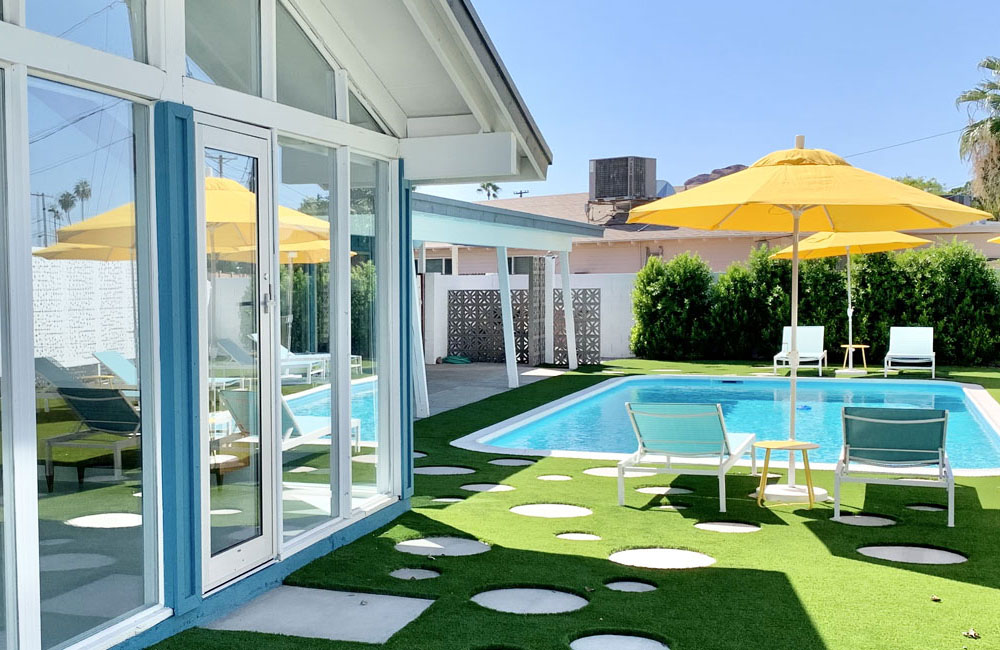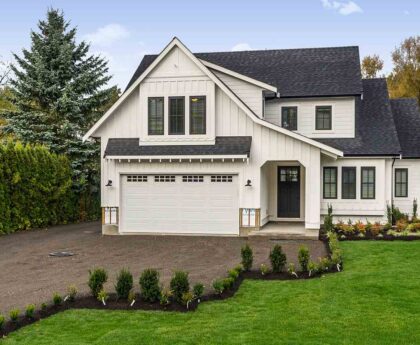Both homeowners and design lovers have a soft spot in their hearts for mid-century modern architecture. The architectural movement, which reached its height between the 1940s and the 1960s, brought a novel and avant-garde perspective to home design. These homes continue to enchant us with their timeless elegance thanks to their clean lines, open floor plans, and perfect interaction with nature. In this blog article, we shall examine the qualities and allure of mid-century modern homes, highlighting their ongoing appeal and impact on modern architecture.
Initial Causes and Influences
Architecture from the mid-20th century arose in response to the post-World War II period. Designers aimed to produce houses that captured the era’s optimism and progress. Aesthetic pioneers, including Richard Neutra, Charles and Ray Eames, and Eero Saarinen, were influenced by the Bauhaus movement, Scandinavian design, and the works of Frank Lloyd Wright.
Key Features
Homes designed in the popular mid-century modern style were built in the 1940s and remained in vogue into the early 1960s. Their use of natural materials and geometric forms gives them a distinctive appearance.
Some defining characteristics of mid-century modern architecture include:
- Simple, elegant design.
- Wide, low, and open floor plans.
- Large windows extending from floor to ceiling to emphasize bringing the outside in a boxy, functional appearance.
- Focus on making things easy and useful.
- The connection between indoors and outside features a variety of environments.
- Unity of form and function in construction.
Every room and piece of furniture in a typical mid century modern homes serves a specific function. They combine indoor and outdoor space, emphasizing bringing nature within. A wide, low footprint and tall windows are hallmarks of the design’s minimalist look. The facades are functional and minimal, taking the form of square boxes. Mid-century modern architecture and interiors are often cohesive with one another.
Interior Architecture
Functionality and simplicity are prioritized in the interior design of mid-century modern dwellings. During this time, furniture with simple, organic shapes and minimalist aesthetics rose to iconic status.
The Eames Lounge Chair, Egg Chair, and Wishbone Chair are timeless designs by Charles and Ray Eames, Arne Jacobsen, and Hans Wegner that are still in high demand today. The use of natural materials like teak, walnut, and leather further enhances the warm and welcoming ambiance of these residences.
Timeless Appeal
The inherent adaptability of mid-century modern dwellings is one of the reasons they have endured over time. They offer the ideal canvas for homeowners to add their own distinctive style because of their simple lines and neutral color schemes. These houses encourage individual individuality, whether it is through the addition of a bold flash of color or a carefully collected collection of vintage furnishings. Additionally, the emphasis on bridging indoor and outdoor areas enables seamless integration with the surrounding environment, encouraging a sense of serenity and calm.
Modern Interpretations
Even though mid century modern homes are adored for their nostalgic appeal, modern architects and designers continue to be inspired by this enduring architecture. Today, we see contemporary homes that embrace technological improvements and environmental principles while including aspects from the mid-century period.
Even in the context of 21st-century living, the ideas of open floor layouts, plenty of natural light, and a strong connection to nature remain applicable. This blending of the old and new results in a distinctive and elegant style that appeal to various homes, such as Ralph Haver homes, that are defined by their indoor-outdoor compatibility, low cost, and minimalist modern aesthetic.
Common Materials Used
Natural materials and unconventional materials that could be mass-produced at a lower cost were frequently used in the construction of mid-century modern houses. Some typical components of a mid-century modern dwelling include:
- Wood such as teak, rosewood, and oak
- Aluminum and other metals
- Glass
- Vinyl Plywood
- Lucite Fiberglass
- Laminated plastic foam
- Marble
Mid-Century Modern architecture is easily identified by its sparse surfaces, lack of decorative flourishes, and clean, simple lines. Window dressings, shades, and transparent drapes are utilized to combine the indoors and outside, while plants and organic shapes are used to set the mood. Designers in the mid-20th century often experimented with new materials like plastic, Formica, and acrylic, leading to a style that features contrasting materials and textures.
Find the Best Real Estate Agents for Mid Century Modern Homes
The greatest real estate brokers who focus on selling mid-century modern homes can be found by following a few simple guidelines. First, you should do some digging to find brokers who have experience and knowledge in this area. Find real estate brokers who have closed deals on similar mid-century modern homes in the area you’re interested in.
You can find information and reviews about real estate agents who specialize in mid-century modern homes by searching online resources including real estate websites, forums, and social media sites. You can also get useful information and suggestions by making connections within the mid-century modern community, going to local events, or joining online organizations that are focused on this architectural movement. You might also inquire about their real estate agent’s performance from residents who recently sold mid-century modern properties.
Finally, after narrowing down your list of potential agents, you should meet with each one individually to evaluate their level of competence, industry knowledge, and communication skills. Inquire further about their familiarity with and appreciation for mid-century modern architecture by asking pointed questions. Mid-Mod Phoenix is an excellent real estate agent who specializes in selling mid-century modern properties.
In the worlds of architecture and design, mid-century modern residences have made an everlasting impression. Their continuing appeal results from their capacity to adroitly combine form and purpose, producing interiors that are both aesthetically pleasing and liveable. Clean lines, the use of natural materials, and the seamless integration of interior and outdoor living are what give these homes their timeless charm.
It is obvious that mid-century modern homes will continue to fascinate and enthrall us for centuries to come as contemporary variations of this design continue to appear. Mid-century modern homes offer an ageless and exquisite option for anyone searching for a home with character and charm, whether they are design enthusiasts or homeowners.




